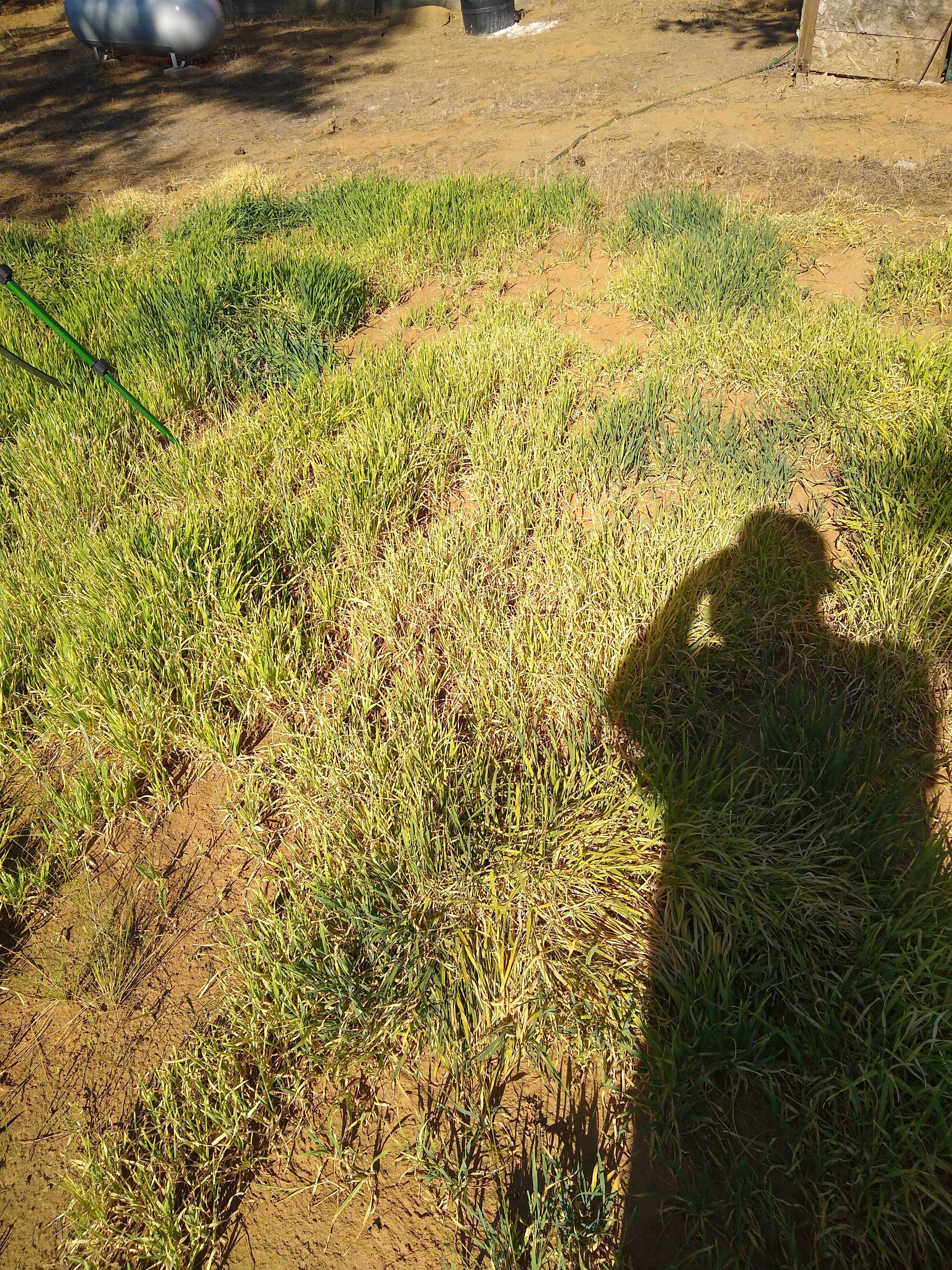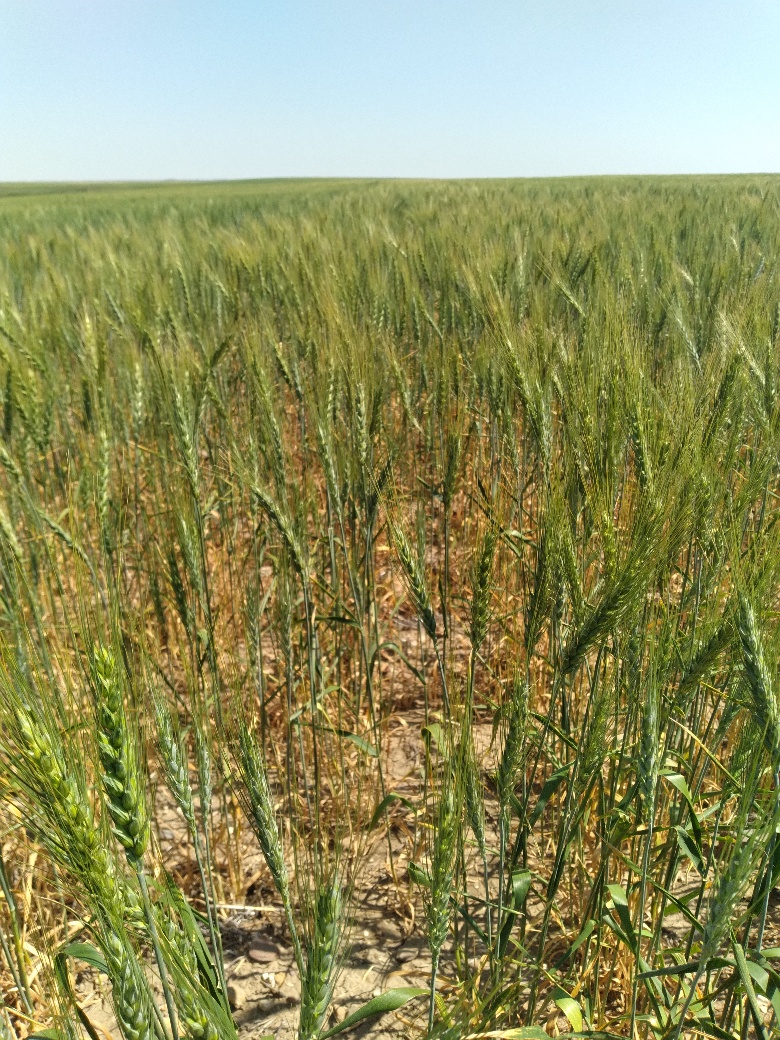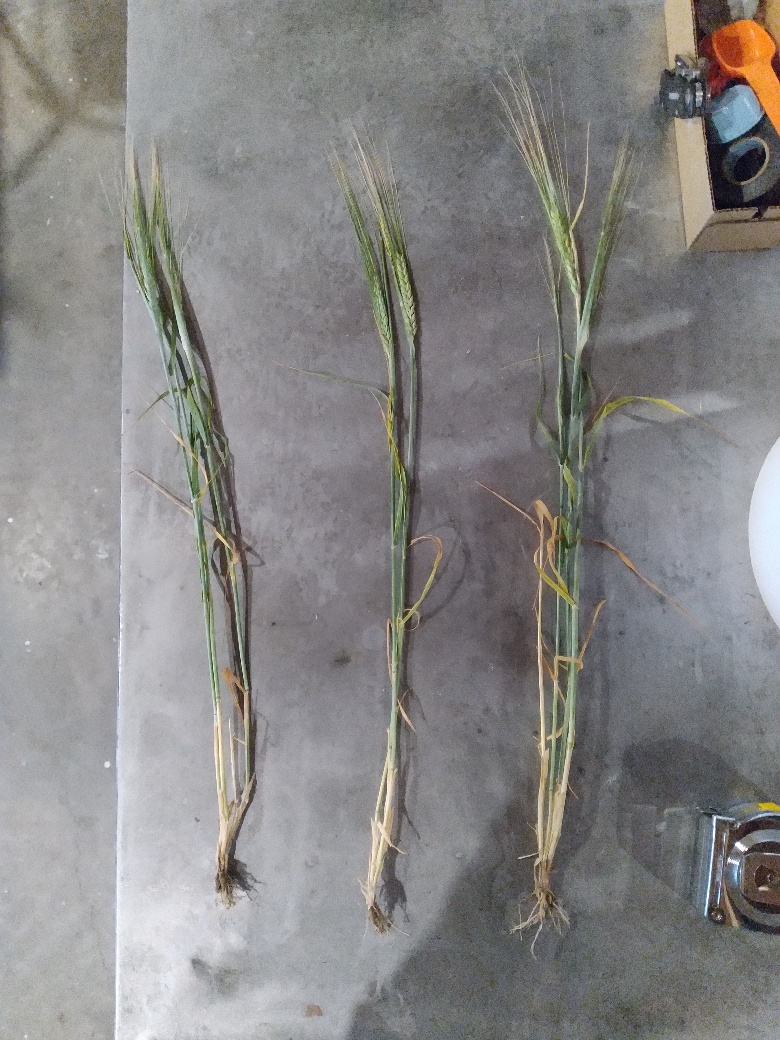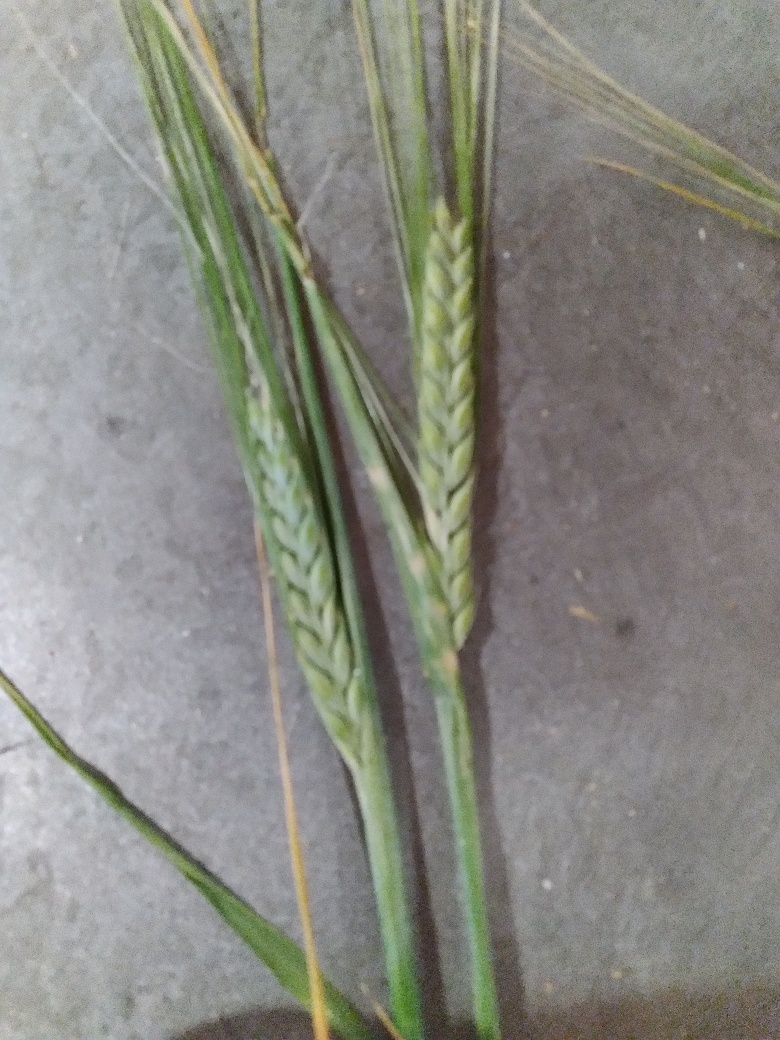As the resident grain farmer here I suppose I should offer an observation.
It appears that the OP has planted far too many seeds per square foot. The plants are too close together and appear to be forming sod. The available nutrients are probably insufficient for the number of plants. The yellowing is often a sign of nutrient, especially nitrogen, deficiency.
When we plant cereals on a commercial scale it is usually to a population of 750K-1MM plants per acre. There are 43,560 sq. ft. in an acre so a population of a million per would be 23 seeds per sq ft. We plant in rows which are 12” apart; the seeds in the bottom of the furrow in each row are, typically, 1-1/2-2” apart. The space between the rows encouarages a process known as “tillering”. Each seed can produce from 1-4 additional stems, called tillers, in addition to the main stem. Each stem can produce anywhere from 20-40 kernels.
In this area (along the Canadian border in N Central MT) barley is usually planted at about 50 lbs per acre. In a year with average growing conditions that can produce 60 bushels (3000 lbs) per acre, an increase of 600:1. It doesn’t take a lot of seed to produce a lot of grain.
The only field of barley that we have this year is about 10 miles from my house, so I‘m not going to make a special trip for a picture, but here’s a pic of the wheat field behind my house. This was planted around 25 May and is fully headed and just starting to turn color a bit from green to gold. It will probably be ready for harvest in 3 weeks, or so. This should give some idea of how much space there can be between plants.









![Craft A Brew - Safale S-04 Dry Yeast - Fermentis - English Ale Dry Yeast - For English and American Ales and Hard Apple Ciders - Ingredients for Home Brewing - Beer Making Supplies - [1 Pack]](https://m.media-amazon.com/images/I/41fVGNh6JfL._SL500_.jpg)





















































